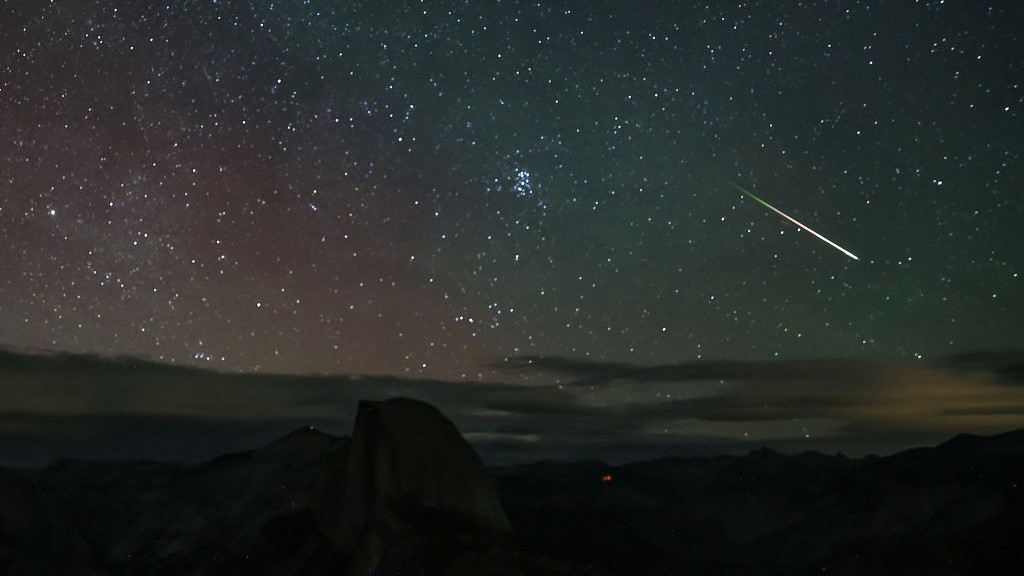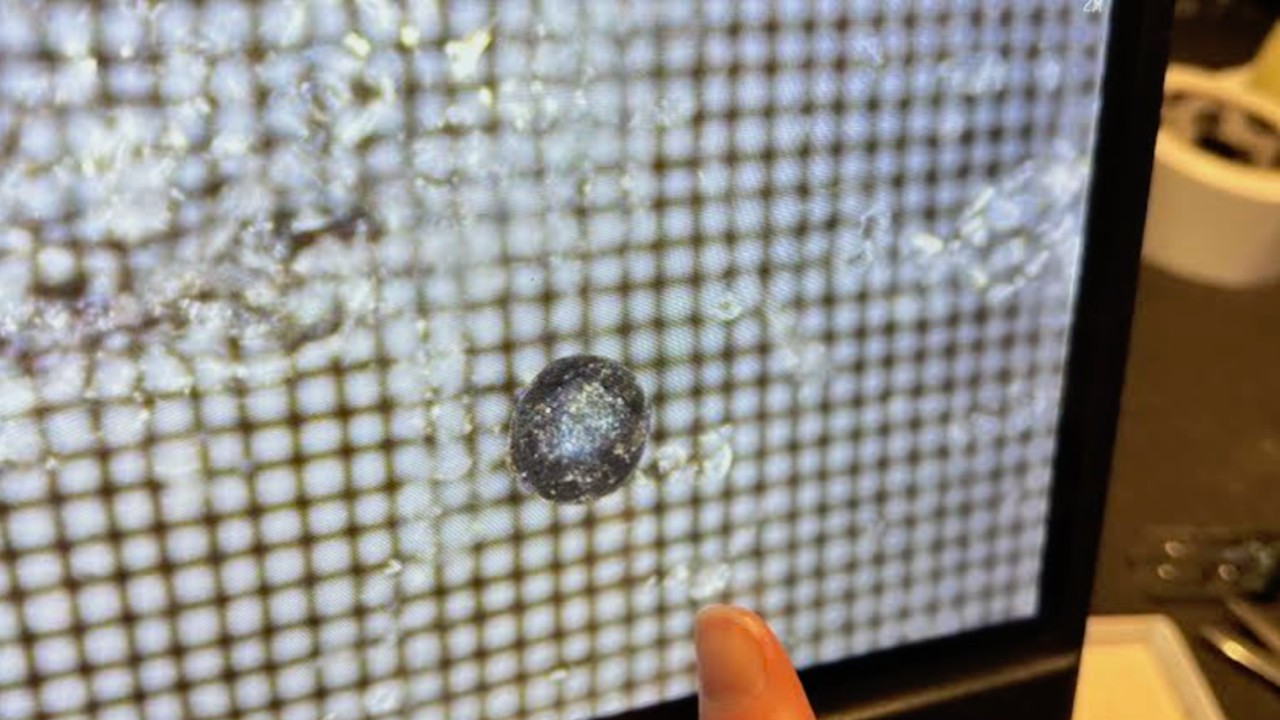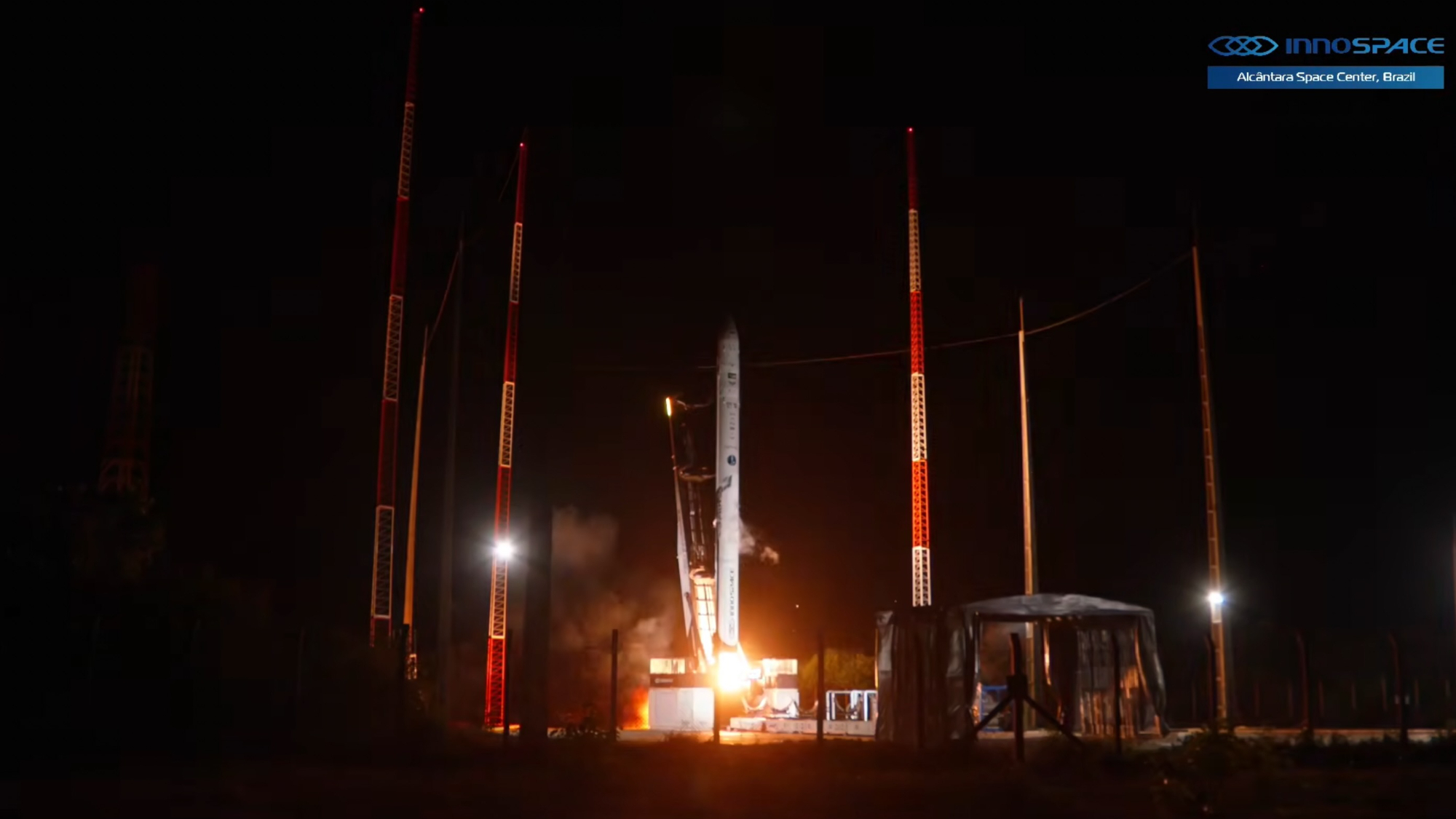'Interstellar' fireballs likely came from within our solar system, study suggests
Avi Loeb's controversial claim that a recent fireball resulted from an interstellar object is taking a hammering.

The supposed interstellar fireball detected over the Pacific Ocean in 2014 probably came from within our solar system, according to new statistical modeling of the meteor and others similar to it.
The new study also concludes that debris from the fireball would not have survived passage through Earth's atmosphere, meaning that the claimed recovery of fragments from it must have a different, more mundane origin.
These results come from an international team of European and U.S. astronomers led by Maria Hajduková of the Astronomical Institute of the Slovak Academy of Sciences. By scrutinizing the altitude and velocity data for the 2014 fireball, plus hundreds of others in NASA's Center for Near Earth Object Studies (CNEOS) fireball catalog, they found that the information given about the fireballs does not include the error range for each measurement. An error range is the level of imprecision of any scientific observation. The problem, explained Hajduková's team, is that this imprecision can make meteors native to our solar system seem as though they have come from interstellar space.
Fireballs are the brightest of meteors, and are seen from the ground as a falling ball of flame shooting across the sky before fading. Most "shooting stars" are the products of tiny grains of dust a millimeter across or smaller, but a fireball might be produced by a stone-sized meteoroid. (A meteoroid is what these objects are called while they are in space; when we see them falling through the atmosphere, we call them a meteor, and any that survive that fall to reach the ground are referred to as meteorites.)
Related: Interstellar meteor fragments found? Harvard astronomer's claim sparks debate, criticism
Harvard astronomer Avi Loeb, who is no stranger to controversial claims about interstellar objects, and his Harvard colleague Amir Siraj argue that a fireball witnessed over Papua New Guinea on Jan. 8, 2014 and detected by U.S. Department of Defense sensors likely came from beyond our solar system. So strongly did they believe this that they even mounted a private, cryptocurrency-funded expedition to the Pacific to trawl the ocean floor in search of debris from the fireball. They found "spherules" that they claim have a composition that marks them out as interstellar in nature. However, independent analyses of the spherules by Steven Desch of Arizona State University and Alan Jackson of Towson University in Maryland suggest that they are nothing more than industrial waste from the burning of coal.
Now Hajduková's team, of which Desch and Jackson are a part, have also quantitatively shown that the fireball was very unlikely to have been interstellar in nature, and instead most likely was a native of our solar system.
Breaking space news, the latest updates on rocket launches, skywatching events and more!
Loeb and Siraj had staked their interstellar claim on data in the CNEOS catalog that appears to show that the fireball was traveling at 27.8 miles (44.8 kilometers) per second relative to the sun when it entered Earth's atmosphere. This is greater than the solar system's escape velocity, which varies with distance from the sun but at Earth's orbit is 26.2 miles (42.1 km) per second. This excess velocity means that the meteoroid would not have been traveling on an orbit bound to the sun. Instead, its orbit would have been hyperbolic — i.e. not closed around the sun — and it would have come from somewhere beyond the solar system. Astronomers have seen objects with hyperbolic orbits before, in the form of the two confirmed interstellar objects so far, 1I/'Oumuamua and 2I/Borisov, which originated around another star and were passing through our solar system at the time of their discovery.
Estimates suggest that there could be as many as 10,000 such interstellar objects zooming through the solar system at any one time, so we might expect there to be fireballs produced by interstellar meteoroids from time to time. However, assessments of the population of small interstellar bodies in our solar system suggest that an interstellar fireball should be an extremely infrequent occurrence. Nevertheless, Loeb and Siraj don't just claim one interstellar fireball, but two: the 2014 event, and another recorded on March 9, 2017 over the North Atlantic Ocean near the coast of Portugal.
Related: Could the solar system be teeming with interstellar objects? We'll soon find out (op-ed)
Hajduková's team set about analyzing the CNEOS fireball catalog with two aims in mind. One was to determine whether meteorite fragments could survive the atmospheric entry of a meteor traveling at hyperbolic velocity, and two, whether any fireballs in the CNEOS catalog really do have hyperbolic orbits.
The catalog contains records of 954 fireballs (as of March 2023), but there is both altitude and velocity data for only 291 of them. From these, six had orbits that could potentially be hyperbolic, according to the new study.
The problem with the claim that some are interstellar is that the error ranges — the imprecision of the measurements — are in the same ballpark as the amount of excess velocity required to make an orbit hyperbolic. Distinguishing between the two is very difficult, and, as long as that imprecision remains, it is impossible to definitively state that a fireball is on a hyperbolic orbit. In other words, the data describing the fireballs should not be taken at face value until the error range in the velocity measurements is investigated.
From their statistical analysis, Hajduková's team found that it was likely that a catalog of purely sun-bound meteoroids resulting in fireballs would contain at least one event that looks like it could be interstellar, but isn't really, because of the imprecision in the measurements. For the 291 fireballs with altitude and velocity data, the researchers found that the chance of one of them masquerading as an interstellar fireball is 53%. When scaled up to the entire population of the CNEOS catalog (~1,000 objects), this probability rises to 93%.
"We conclude that, based on the available data, we find no evidence to validate an interstellar origin of any of the nominally hyperbolic fireballs from the CNEOS catalog," Hajduková's team writes in the new paper.
Furthermore, their work suggests that, even if one of the fireballs had a hyperbolic velocity, no debris could have survived to reach the ocean. The meteoroid would simply vaporize through heating from atmospheric ablation — this is what produces the brief "fire" of the fireball. Therefore, what Loeb and Siraj's team found on the ocean floor could not have come from an interstellar fireball, which further strengthens the analysis that the spherules are just terrestrial industrial waste. Hajduková's team do point out that, if the fireball had been traveling at a slower velocity that kept it bound to the sun, then fragments could have reached the ocean, but then they would just be solar system debris no different to any of the other meteorites that reach Earth's surface.
Their findings also have wider repercussions for astronomers who study small pieces of debris in space. It might not just be the supposed hyperbolic fireballs that have had their velocity overestimated; this may be a common mistake even in studying regular fireballs. Because fireballs and meteors are debris from larger objects that date back to the dawn of the solar system, tracking where fireballs and meteors come from is an important part of studying the solar system's history and assessing the population of minor bodies in the inner solar system. If velocities have been overestimated and the size of the populations of small debris mistaken, it may be that this history requires some subtle alterations.
The research was published on Oct. 25 in the journal Astronomy & Astrophysics.

Keith Cooper is a freelance science journalist and editor in the United Kingdom, and has a degree in physics and astrophysics from the University of Manchester. He's the author of "The Contact Paradox: Challenging Our Assumptions in the Search for Extraterrestrial Intelligence" (Bloomsbury Sigma, 2020) and has written articles on astronomy, space, physics and astrobiology for a multitude of magazines and websites.

